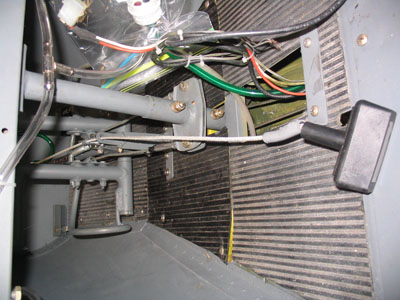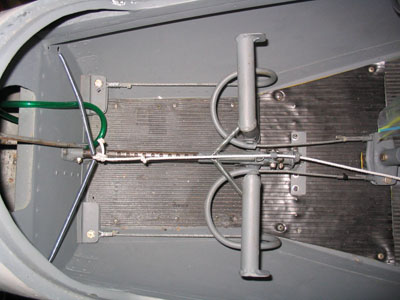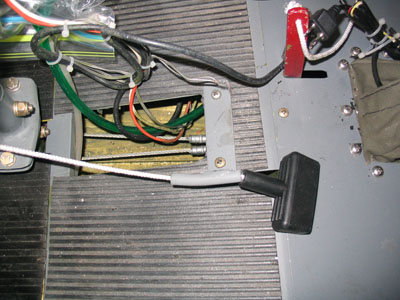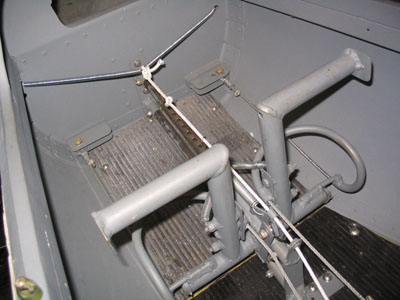As most owners of HP 14 or earlier Schreder designs know these designs did not include rudder pedals that can be considered “adjustable”. These designs had the pedal pivot points bolted to the floor, and the construction notes called for adjusting the pedal position on the floor to suit the builder. The only way of changing the pedal “position” easily was to change which hole in the driver “strap” was picked up by the bolt on the pedals (this was a mod performed on our HP14 when we purchased it).
(Thanks to Bill Avoilo who submitted photos of the original system to the HP website.
I could not find photos of our original setup, but it was the same as this, except without the heel brake )While this works, it has a number of problems
– The geometry of the system is poor when the neutral pedal angle is not near perpendicular to the straps.
– The pedal axle will likely be either ahead or behind of your feet depending on your leg length – making use uncomfortable over long periods of time.
– When the pivot point is not at the pilot’s foot, movement of the entire foot is required rather than pivoting of the ankles. This forces the pilot to move his whole legs – making the workload go up considerably.
– When multiple pilots fly the aircraft unbolting the control linkages is required – and re-assembly with “unbalanced” or uneven pedals is possible - I’ve done it (one of those flights where almost all turns are in the same direction).
– In flight adjustability is impossible to reduce fatigue.In our case, my partner (Alex) is ~6’, while I am 5’6” – leading to all of the above making the aircraft less than desirable for comfort when flying for long periods of time. Combining this with the fact that the HP14 requires quite a bit of pedal travel for full inputs made 7hr flights quite demanding.
So Alex and I began an evolution of the pedal assembly to address these issues.










